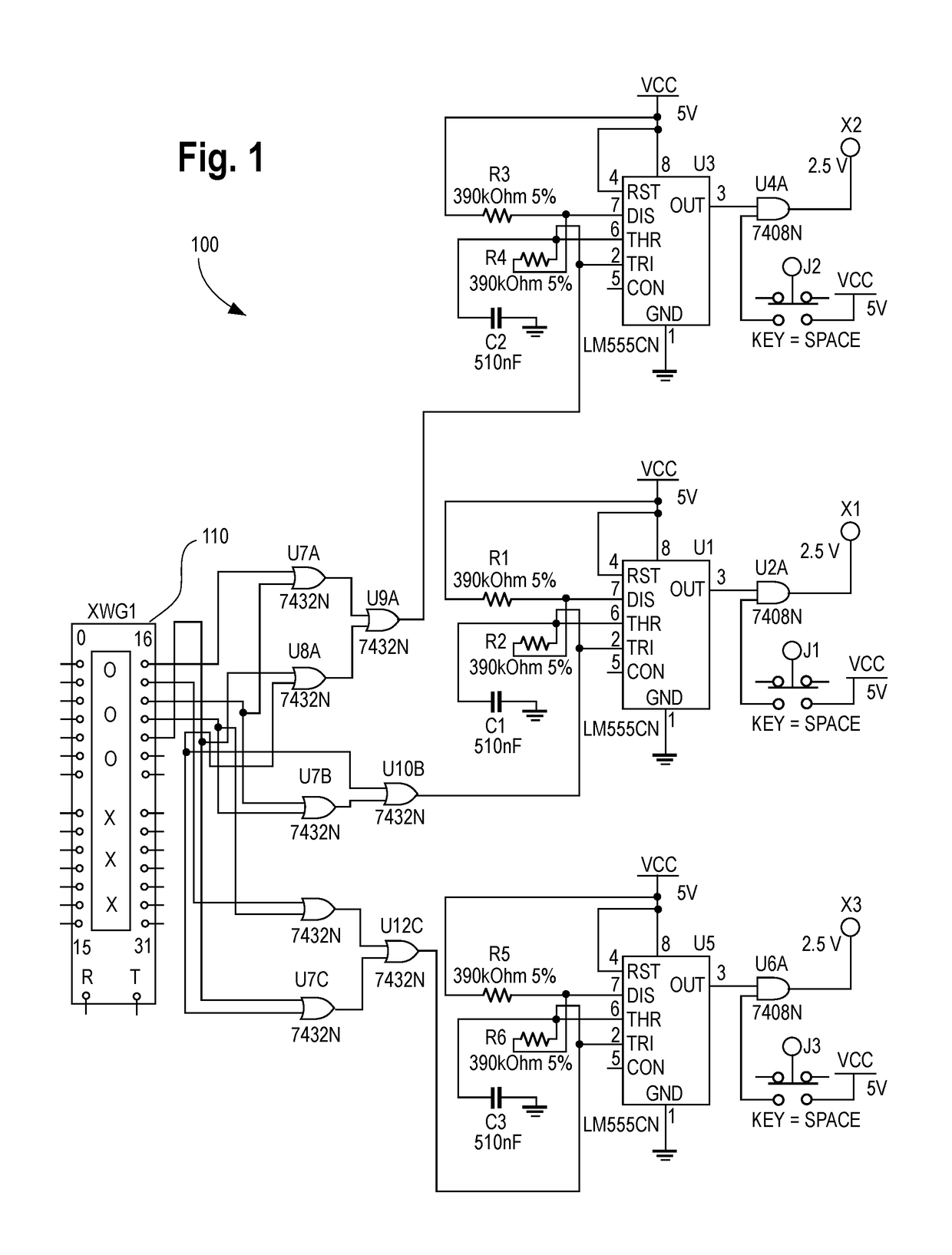Sensor-based controllable LED lighting system with repositionable components and method
a technology of led lighting and components, applied in the direction of energy saving control techniques, lighting support devices, electric circuit arrangements, etc., can solve the problems of inability of conventional lighting to control lack of advanced control of light sources by conventional lighting, and inability to direct and rotate light panels in selected light fixtures or in selected. , to achieve the effect of reducing the number of conventional luminaires, and increasing the number of lum
- Summary
- Abstract
- Description
- Claims
- Application Information
AI Technical Summary
Benefits of technology
Problems solved by technology
Method used
Image
Examples
example 3
[0314] Setting the intensity or direction of a group of fixtures in an array. These may be electronically linked by fixture ID numbers. This example will be provided by the paragraphs below. We will select subgroup 3 in a group of five subgroups within an array.
[0315]FCT 6: This selects the MANUAL mode.
[0316]FCT 1 or FCT 2: Selecting the intensity or direction function to control. The DISPLAY may then highlight selections 7-10 and GROUP DISPLAY may prompt with “At which highest level will you start?”
[0317]FCT 7: The user has selected the GROUP level and the GROUP DISPLAY may highlight the five groups (as labeled boxes) from which to select.
[0318]Press 3: Pressing the number 3 may highlight subgroup 3 in the display.
[0319]Once this subgroup is selected, the procedure for setting the intensity or direction proceeds in the same way as in the first two examples. Any command given may be applied to all of the fixtures in that subgroup. This concludes Example 3.
[0320]An example will now b...
PUM
 Login to View More
Login to View More Abstract
Description
Claims
Application Information
 Login to View More
Login to View More - R&D
- Intellectual Property
- Life Sciences
- Materials
- Tech Scout
- Unparalleled Data Quality
- Higher Quality Content
- 60% Fewer Hallucinations
Browse by: Latest US Patents, China's latest patents, Technical Efficacy Thesaurus, Application Domain, Technology Topic, Popular Technical Reports.
© 2025 PatSnap. All rights reserved.Legal|Privacy policy|Modern Slavery Act Transparency Statement|Sitemap|About US| Contact US: help@patsnap.com



